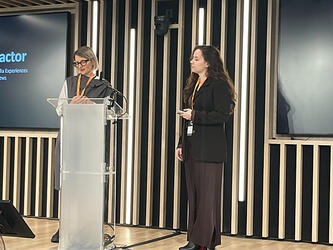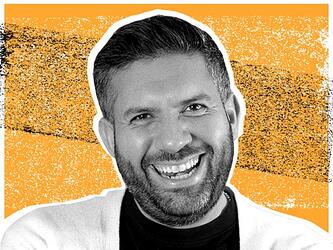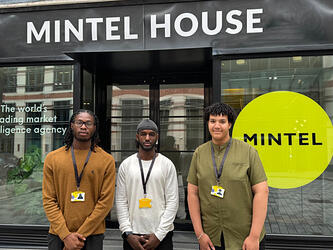‘No-one cares about the baking; they care about the cake’: How can user research cut through?

Of all the disastrous product launches in history, it is arguably Coca-Cola’s release of ‘New Coke’ in 1985 that stands out as the most infamous. The company, losing market share to Pepsi, had sought to reformulate the recipe, and did so with a buzz of publicity. The product sank, and 77 days later the original recipe returned to glory, relabelled as ‘classic’ and outstripping sales of its newer rival.
New Coke failed, primarily, due to US public’s attachment to the original brand and bigger-than-expected opposition to the changes to its flavour. The company had researched the change through taste tests, surveys and focus groups, but it was a secret team of boardroom executives, dubbed ‘Project Kansas’, that instigated the flavour change. If research had been considered before the idea for New Coke was hatched, arguably many of the issues the new flavour faced could have been picked up in advance.
Therein lies the rub: using research to rubber stamp or evaluate fully formed ideas prior to launch, rather than throughout the entire product cycle, evaluating the reasoning behind a change as well as the effectiveness of it. Many user researchers will recognise this pattern today, with a litany of failed new products evidence that research has a fight on its hands to be central to boardroom and senior team thinking.
Why is user research sidelined during the product development cycle? “Time and cost constraints often push leaders to prioritise speed over learning,” says Kimberly Bastoni, chief revenue officer at Alida. “We are seeing that a lot with AI tools at the moment; everyone is talking about speed, and everyone is so excited to get there first that research sometimes suffers because of it, as they think they don’t have time to conduct the research. It is seen as ‘nice to have’ and not necessarily as a business driver.”
Claire Murray, product director at Red Badger, says user research can be very helpful across generative (broadly, getting a better understanding of customers’ needs) and evaluative research, and that its value is embraced in some organisations.
However, it is in the higher echelons of organisations where user research can be profoundly undervalued, where, like in the New Coke example, decisions are made at a senior level before research has been done, with pressure then on the teams charged with bringing a product into being to execute the vision of the senior leaders involved. “Generative research plays a big part in shaping strategy and business planning if you are doing it well,” says Murray. “Often, the people who do that don’t do research – they sit in their ivory tower boardrooms and decide what will happen. By the time it gets to the people and the teams executing on the work and the plans more actively, they are not often in the position to challenge bigger decisions that have already been made.
“It is costly to make fundamentally flawed decisions without testing them. You need buy-in, and you need people who are open to the fact that they might not know everything about what they want to do.”
"The key isn’t for you to tell a better story, it is to tell a story in which the audience sees themselves."
In other places, user research is not well understood, with ignorance of what it means, and the range of what it entails – everything from short surveys to large-scale research projects lasting months. It can also be perceived as expensive, not valuable enough and unnecessary sometimes – a view particularly resonant for more senior, experienced staff who may feel they already know enough about an issue to veto research to confirm their views. This is the “curse of too much knowledge”, where staff’s expertise means they make decisions without research to confirm their thinking or challenge their ideas.
Murray says this last problem “is a massive problem as you know too much – you’re not a typical user, and you can’t in any way understand how much less someone else might know, and therefore interpret how they might see something”. She adds: “Often you will get overly complicated and ridiculous solutions for a thing no one else will understand.”
Building up
How, then, should user researchers build their status within their organisation? Part of the solution is rooted in communication, according to Neha Mittal, customer experience and user experience (CX and UX) practice director for Emea at C Space. “I feel we [researchers] get stuck in the wrong details; we get stuck in research jargon, while we need to do a better job in connecting the dots between what users want and the outcomes leaders care about,” she says.
“Leaders care about revenue, user or audience retention, and acquiring new customers. When we bring stories of how research has shifted product direction or solved big problems, we will move the needle in finding our voice at the table. You want to find champions [in the company] who can move user research up the priority list.”
For Connell O’Reilly, vice-president of product management at Alida, it is important to present the case for research in a way that resonates with senior leaders, particularly highlighting the cost of a failed project. “You need to contextualise the work you are doing to the outcomes for the business leader you are working with,” says O’Reilly. “If you are going out and saying: ‘I’ve done the research, this is what customers think’, you are relying on them to go the entire way from ‘I’ve learned something’ to ‘how do I apply it?’. You take what research have, you contextualise it to the business of [senior leaders’] interests, and that way you can talk about how to drive the numbers, metrics and outcomes that matter to them.”
O’Reilly says it is more than just providing context for research. “The key isn’t for you to tell a better story, it is to tell a story in which the audience sees themselves,” he explains. “If you are just trying to tell the research story, it will still fall flat. Think of [the audience’s] perspective, thinking of them as a character, and use that to tell the story, but powered by research.”
AI is often seen as a threat to the research function, but O’Reilly considers its speed as both a benefit and a drawback in some circumstances, as “if you start out on the wrong foot, and take a misstep, you could be way down the line before you realise the mistake you made”. Research provides a strong understanding of customer and market conditions, and what users are looking for. “Research should be a foundational building block to inform AI, so that speed and scale happens safely and in the direction the business really wants to go.”
Not alone
Tackling siloes is also vital, as is bringing together people working across different teams in the organisation in areas that touch upon user research, such as marketing, CX and employee experience. “You want to think about how you bring these disparate pieces together, as ultimately you are all working towards the same goal: how do you drive revenue, how do you inspire better retention and how you acquire more customers,” says Mittal.
Bastoni also sees siloes as part of the reason why user research can be shut out of the early stages of projects. “If we get out of siloes and get involved in different sides of the business, then we become integrated into those businesses instead of just an afterthought,” she says.
To have a ‘voice at the table’ with the senior leadership team, says Mittal, researchers must be proactively making connections with senior staff if there is not a pre-existing relationship. She says: “How you are making sure you are on someone’s phone or desk a year from now is a really crucial question you want to ask yourself.”
Business leaders often talk about ‘disruption’ in the market when making the case for new products. But this also gives researchers a route in when making the case for the value of their work and the need for it to be embedded throughout the entire product cycle. “Disruption can come from anywhere,” says Mittal. “Research can help you pre-emptively protect yourself.”
The data team within an organisation can be useful allies, says Murray, as they will often have access to a lot of good quantitative data that is useful to the business. This relationship “benefits everybody”, she adds, as data teams want to know the reasons behind the patterns they are seeing in their data, and often have sway with the c-suite.
Leaders care about revenue, retention and customers, and user researchers similarly need to focus on solving big business challenges, says Mittal, adding that “the moment we do that, we will have senior leadership on our side”. With many businesses increasingly global in their outlook, it is also important to recognise how research can help brands better understand other cultures, and provide a voice to populations which might not otherwise be present in the room when a product is being designed.
“Who’s in the room determines what gets built,” says Mittal. “If all voices can’t be present in the room, how can each presence in the room do a better job of listening to voices from outside the room to make sure the product is really serving the needs of the users it wants to connect with? Ideally, you want to have a product that is creative, is really solving a problem, has an easy design and is ultimately bringing impact.”
Murray introduces an analogy of buying a cake from a shop, saying that customers want “more cake and less baking” in their interactions with the business, meaning they want to hear about results, not process. “No one cares about the baking – they care about the cake,” she adds. “We all trust and agree that you’re seasoned professionals, so we don’t need you to explain how you’ve done [the research] – tell us what it means and what impact it will have.
“That’s the power that research has – to give you insight into what business results might be achievable if you get it really right.”
The MRS User Research Conference will take place on Thursday 16th October. For more information, please click here.

We hope you enjoyed this article.
Research Live is published by MRS.
The Market Research Society (MRS) exists to promote and protect the research sector, showcasing how research delivers impact for businesses and government.
Members of MRS enjoy many benefits including tailoured policy guidance, discounts on training and conferences, and access to member-only content.
For example, there's an archive of winning case studies from over a decade of MRS Awards.
Find out more about the benefits of joining MRS here.














0 Comments